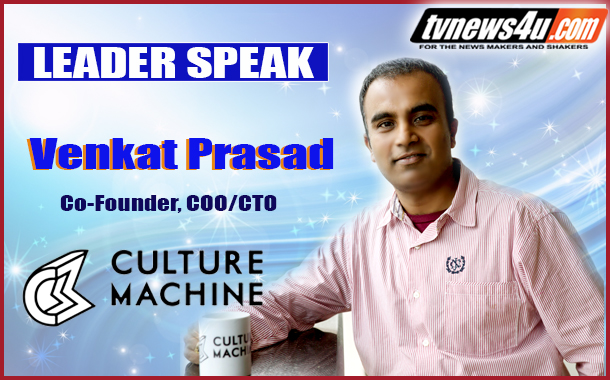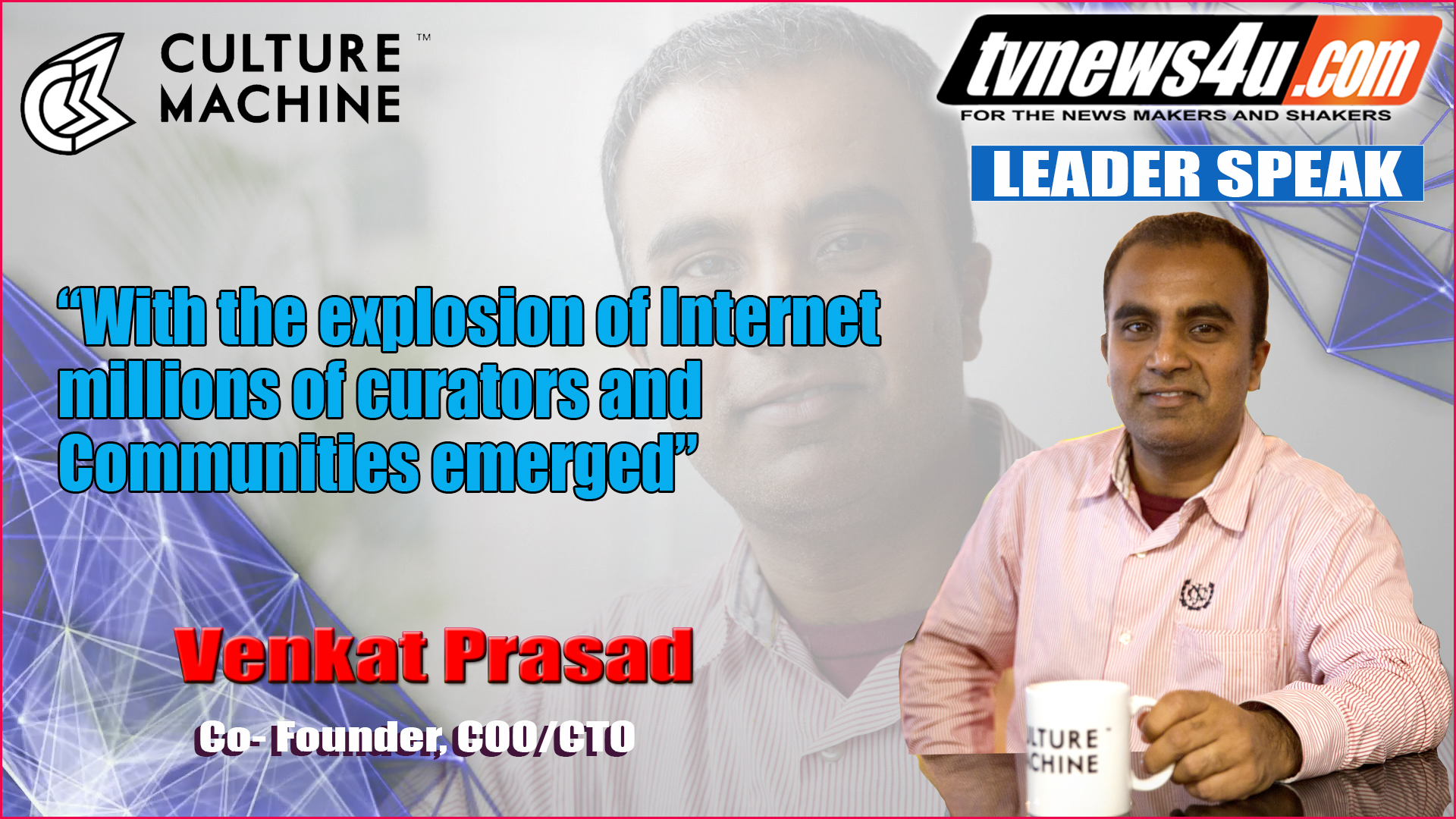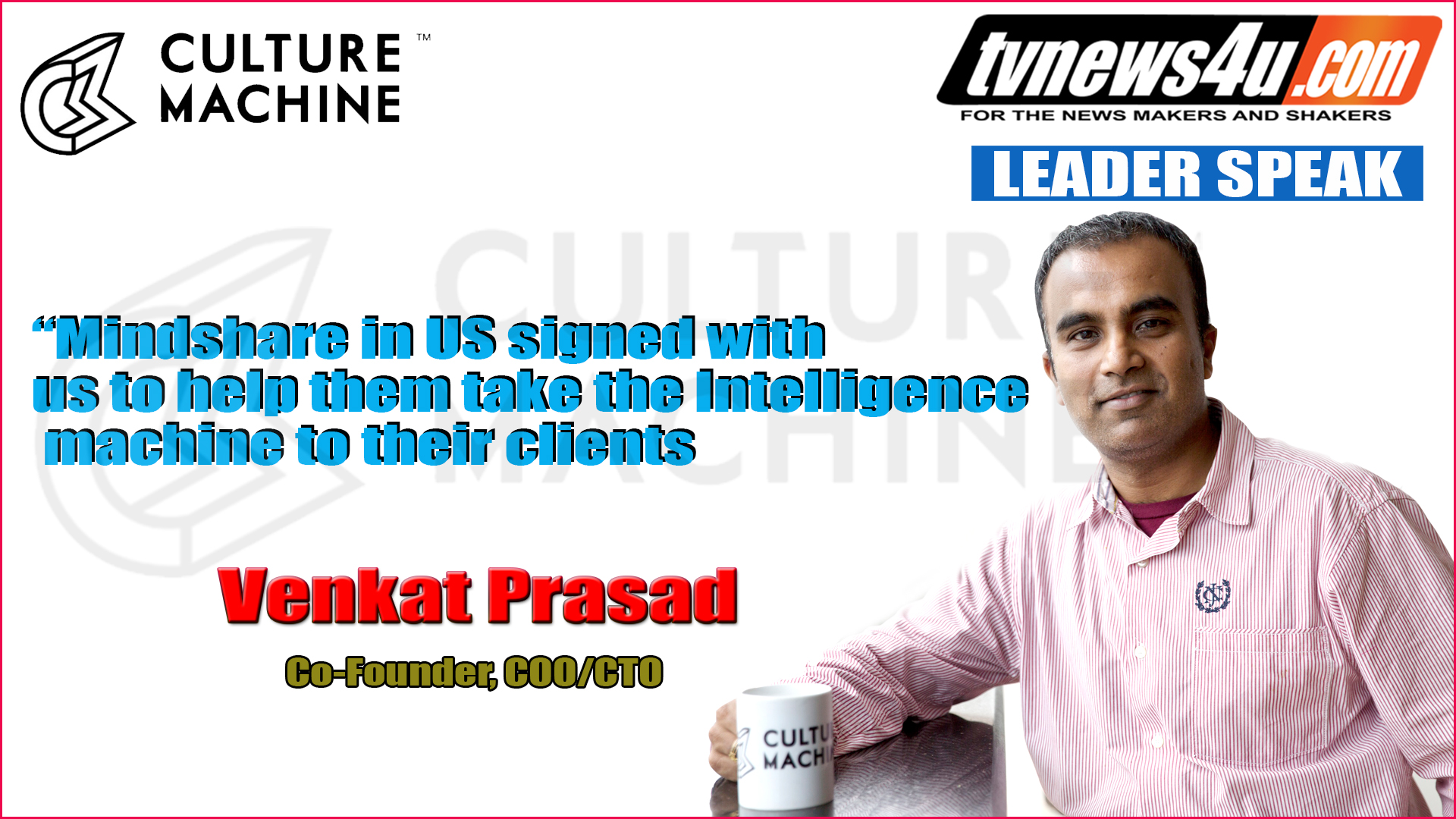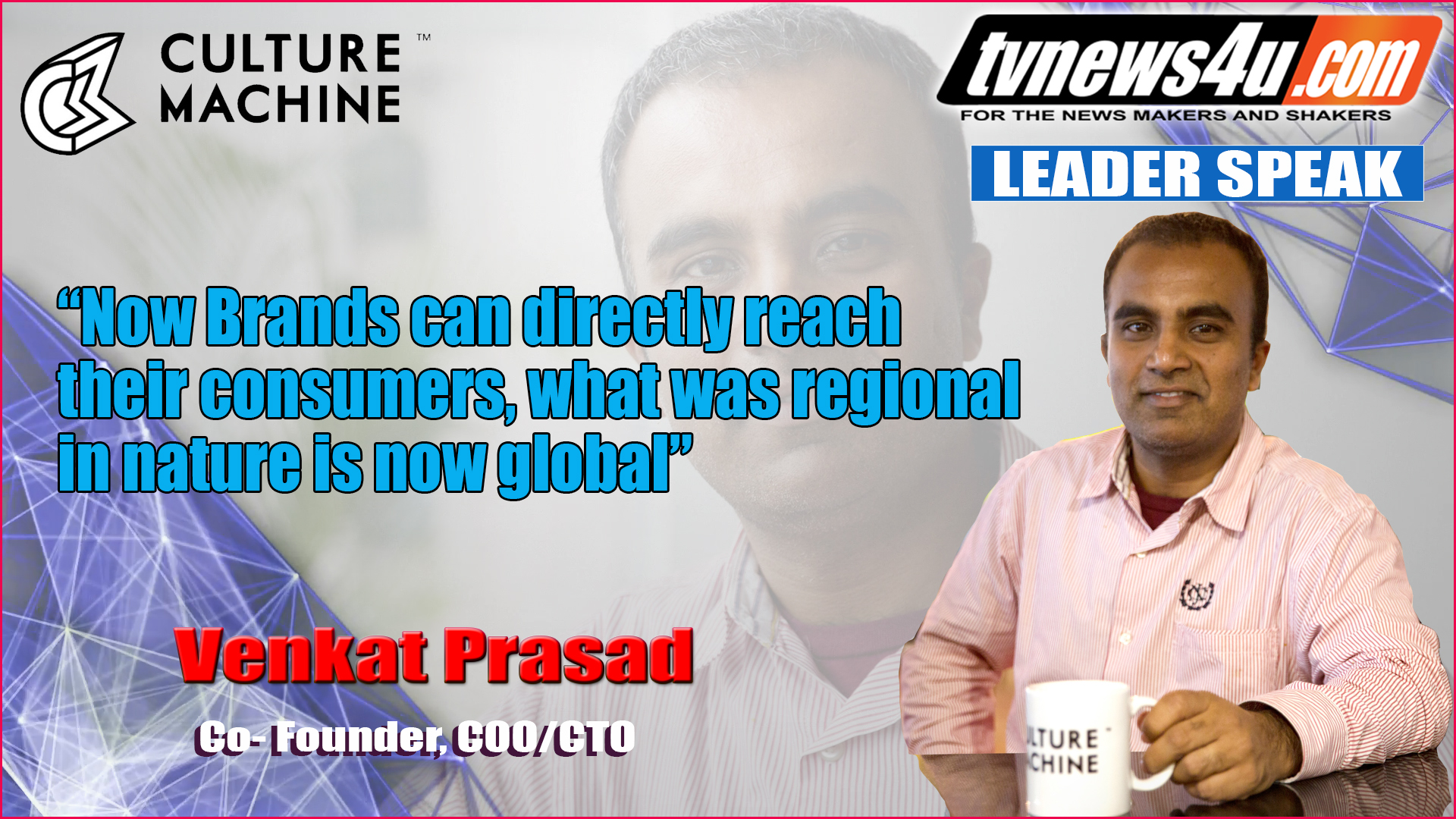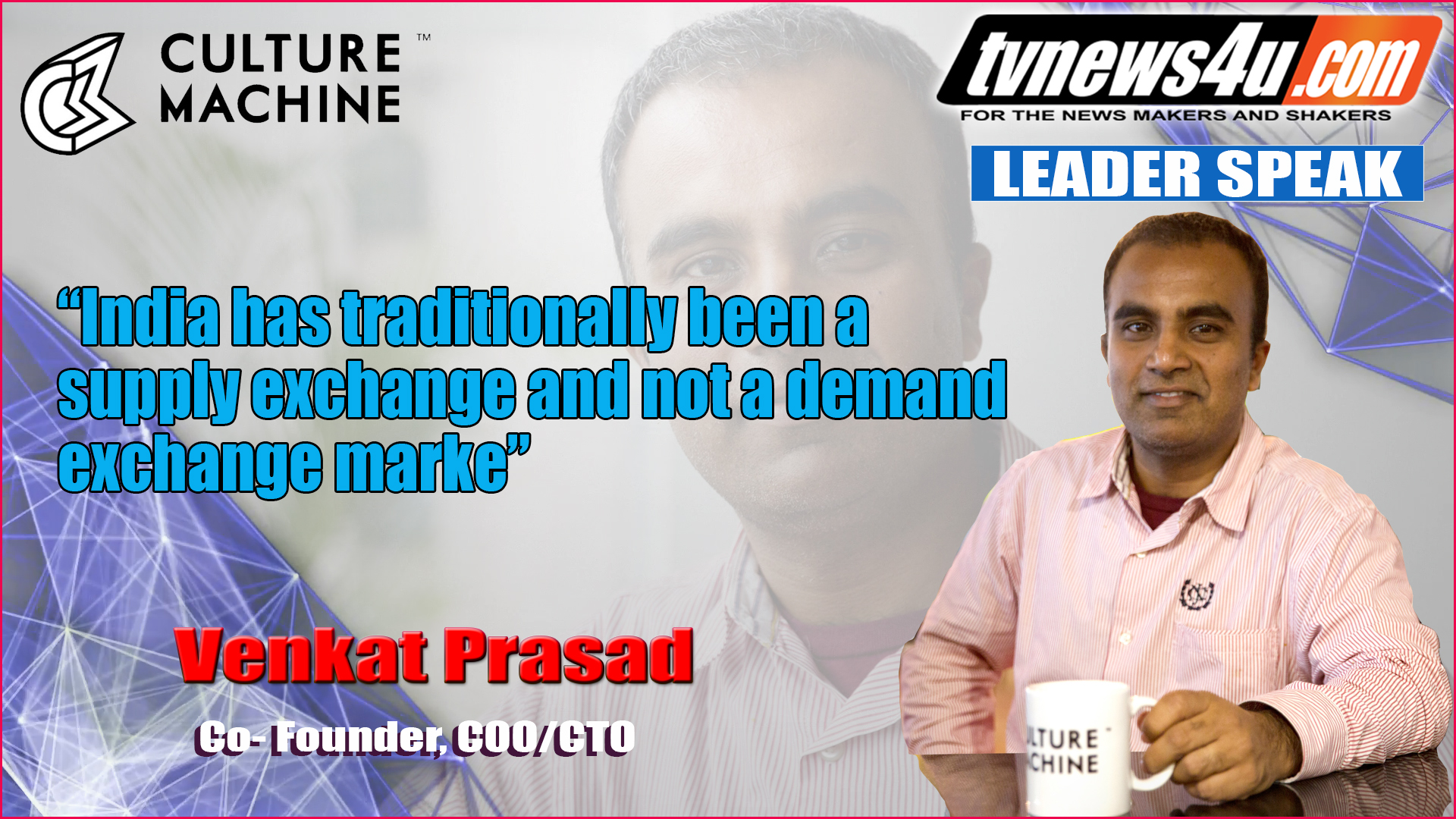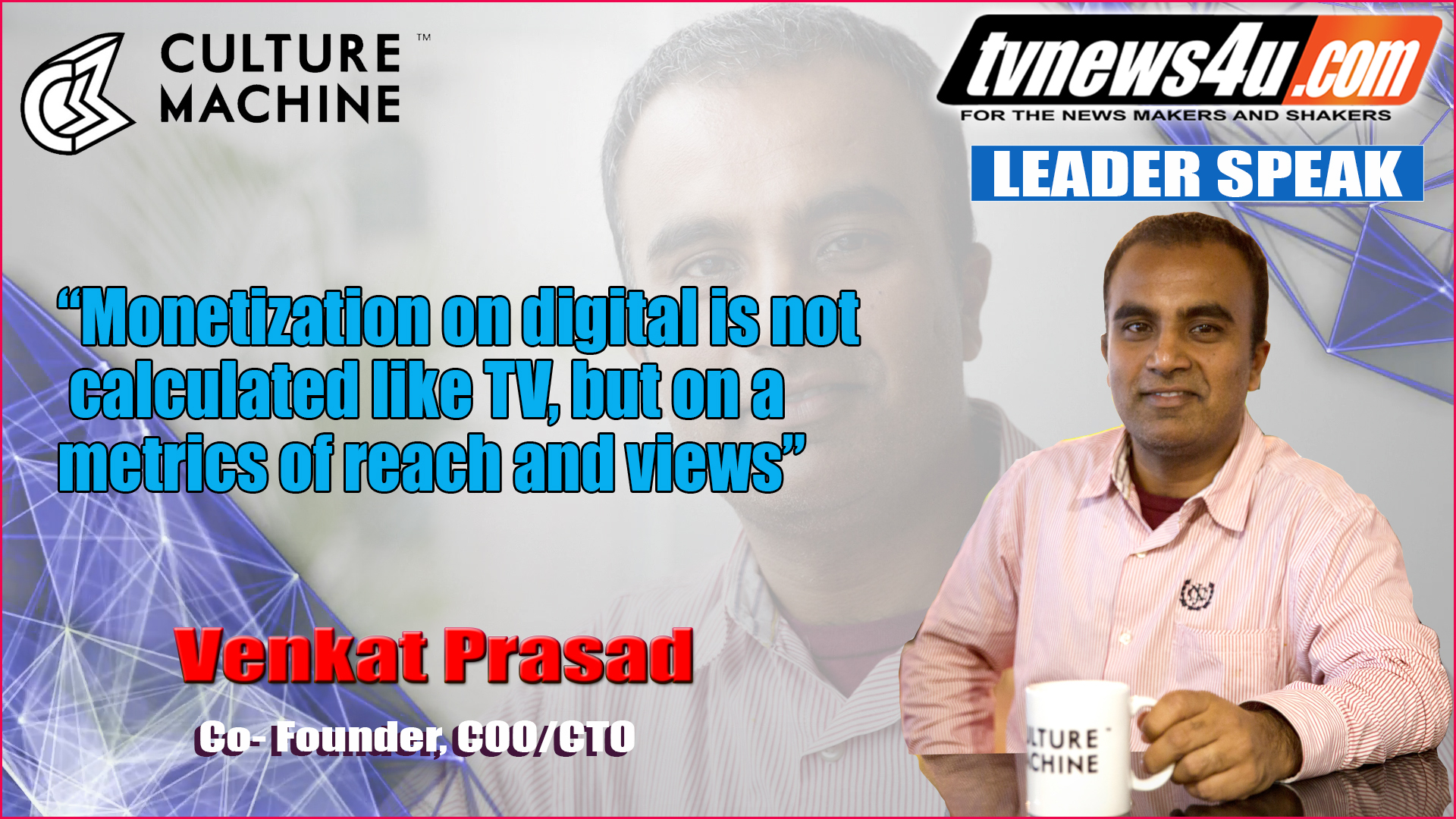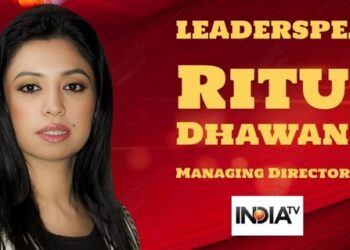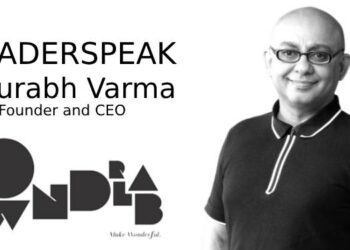Venkat Prasad is a technology executive of Indian origin based out of San Francisco bay-area. Having spent most of his 19+ years career in various leadership positions at fortune-500 global enterprise, media & consumer tech companies such as Google, YouTube, Yahoo and Intuit, Venkat has a penchant for building scalable products, building global teams and creating value for all his stakeholders.
In early 2013, Venkat moved on from Google/YouTube, to team-up with his co-founder Sameer Pitalwalla, to build Culture Machine ground-up to one of the largest and fastest growing digital media networks out of South East Asia. As a Co-Founder & COO/CTO at Culture Machine, Venkat has been instrumental in formulating strategy, fund raising, setting product vision, building operational excellence and to scale the business from inception to a multi-million dollar enterprise with 250+ employees in a relatively short-time period of over Four years.
Culture Machine is a Digital Media Company whose mission is to use technology and storytelling to create great digital brands that people love. By combining cutting edge technology with great content, it currently runs some of Asia’s largest digital media brands and also licenses it’s core technologies to advertisers, media companies and agency partners world-over. Culture Machine, a wholly owned subsidiary of The Aleph Group, Singapore, has offices in India (Mumbai, Pune, Delhi, Chennai and Hyderabad) and the United States of America (California)
Venkat Prasad caught up with tvnews4u.com in an exclusive chat describing his journey so far and future plans for Culture Machine:
Excerpts
- What prompted you to start Culture Machine for the Indian Market?
Sameer and I come from diverse backgrounds, he with journalistic and me with a technology experience.
In 2013 we realised that internet was on the rise and it was disrupting distribution of satellite television, as the case when TV disrupted print. Story telling has been adapted to various mediums and also consumed in various forums. Due to Broadband Connectivity videos were consumed online on the likes of YouTube/Amazon/Netflix short & long format of storytelling content is now being consumed through the internet.
When it comes to Television which is a linear feed tech model, the content is a push model where programming is created which is more of a regional model and then it is broadcasted on few channels where the audience is aggregated or segregated as per their choice and advertisers spend as per the target audience for their products. But when it comes to Digital there are infinite channels. Earlier media agencies controlled advertising content and decided what the consumer watched but with internet, the consumer controls and consumes content on demand. Now it is no longer 50-60 channels but 50 million as every news feed in itself is a channel. Now Creators/Publishers and Production Companies reach the consumer directly, if you don’t somebody else will step in and fill the space.
With the explosion of internet millions of curators and communities emerged, content which earlier didn’t have an outlet in the traditional television where there was a restriction on the number of slots started getting attention and an outlet. Whether it was music, cover artist, food recipe, fashion, beauty etc.
Take the case of food as a genre, earlier there used to be a few cookery shows helmed by a master chef or a celebrity for a certain audience but with the internet there are about millions of channels/recipes/stories told with food. With traditional recipes getting a modern twist and global cuisine being accessible at the click of a button, thousands of videos are being produced and consumed every day.
What used to be a scarcity due to distribution has now shifted to scarcity of audience attention. On TV the advertiser had a benchmark on their consumers and products were advertised as per the TG. Now with a video on FB or other mediums, there is no guarantee that you would reach the target audience as there is a plethora of information available. HotStar /Netflix/HBO/Amazon have now personalised content where you have certain kind of shows and you subscribe and pay a subscription fee to consume the content.
Traditional media is monetised via two mediums, ‘Subscription’ was one business and ‘Advertising’ the other business. Now Advertising is completely disrupted and taken up by the likes of YouTube/ FB and other platforms. Now brands can directly reach their consumers, what was regional in nature is now global. As the concept of Prime Time has vanished as all have a personalised screen in the form of Mobile phone in everyone’s pocket and with millions of viewers engaging in content across platforms and multiple screens, the biggest problem is consumer attention and to draw the attention one needs to create relevant content and engage with the consumer. Due to globalisation and connectivity the world is moving towards a place where there is a one on one consumption and personalisation which is very important.
In the future to be a successful media company one has to narrate a one-on -one story to the consumers, but to do that one has to understand consumer likes and dislikes and as internet is a data driven business and every action can be tracked not individually but as an audience as per consumption patterns and that is what Culture Machine does as we have connectivity and data partnership with the likes of YouTube, Facebook, Twitter, Instagram through which we garner about 3 to 3.5 billion video consumption on a daily basis. We also have systems via which we interact with third party sources and take forward this raw data, we process close to 100 terra bytes of data on our Big Data platform on a daily basis, analyse and our first technology platform ‘Intelligence Machine’ spits out the content creatively and informs us as to what content to create for our digital media brands. It tells us the latest trends/the emotional treatment needs to be given to formats and themes. ‘Intelligence Machine’ takes in all this data and creates its own creative brief or recommendations for brands, marketers and for our own properties like Being Indian.
We also licence out to 3rd parties by which we generate revenues. Basically this machine was built for our internal use, 2 years after we built it we used it and learnt from it. Later we started working with advertisers to give those recommendations and many were interested in actually licencing the technology itself. For the past 11 months we have started licencing to clients in the US and we have grown up to Million and a half only on the technology business.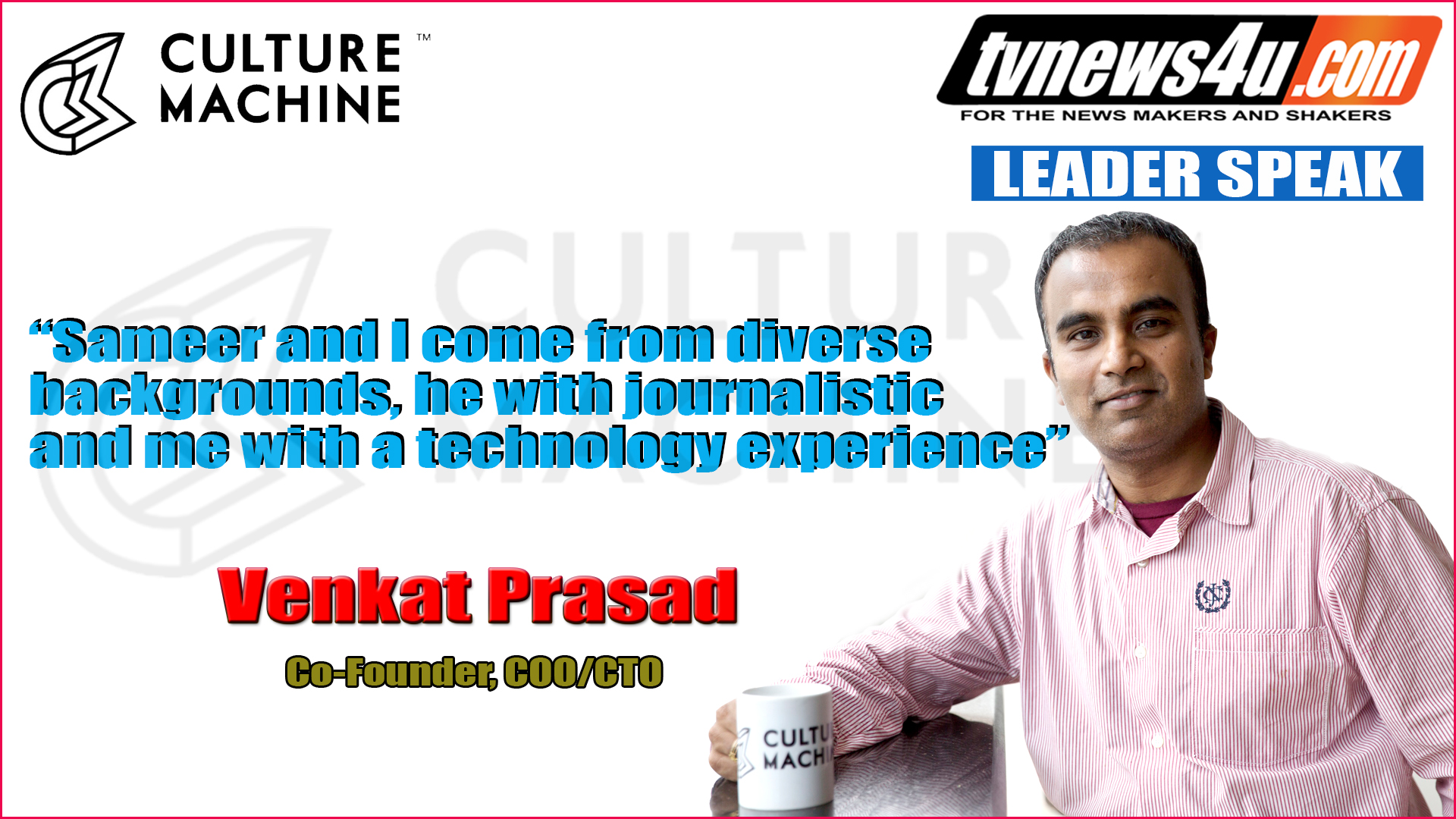
Culture Machine has Sales teams in Singapore/Malaysia/South East Asia/ US/ UK.
Intelligence Machine which basically takes all the data which can be tracked if one has the basic infrastructure but its not unsolvable with the differentiation that we use a lot of algorithms, data science, machine learning and increasingly AI i.e. Artificial intelligence.
Culture Machine is now increasingly using the inside of the computer machine to look into what content is working and what is not. For instance if there are 10000 videos on You Tube out of which 500 would have been actually consumed, 10% of the top videos are analysed frame by frame to see what is the audience interest and marry that with the topics and brands to recommend for future content that engages with the audience.
- Your take on SM/Digital advertising V/S traditional pure vanilla advertising?
The major area is audience consumption, audience eyeball has essentially shifted, and India earlier had issues on accessibility, Broadband connectivity and the general awareness about the availability. But now with smart phone which is the first screen, easy connectivity to the internet thanks to JIO, 3G networks and making data so cheap and available, the natural application of anyone educated or not educated is Video. Everyone from the Urban to rural audience is watching video and it has become the universal language. Due to this we think digital has to have a whole lot of local programming, content and the depth of programming in each category is very relevant.
Let’s take 50 videos, it’s not humanely possible to go through every comment but machines which will take all those comments and say for this video TRUST has been the emotion, on the next sadness and so forth. This helps in scripting and product placements as per the emotions expressed by the consumer.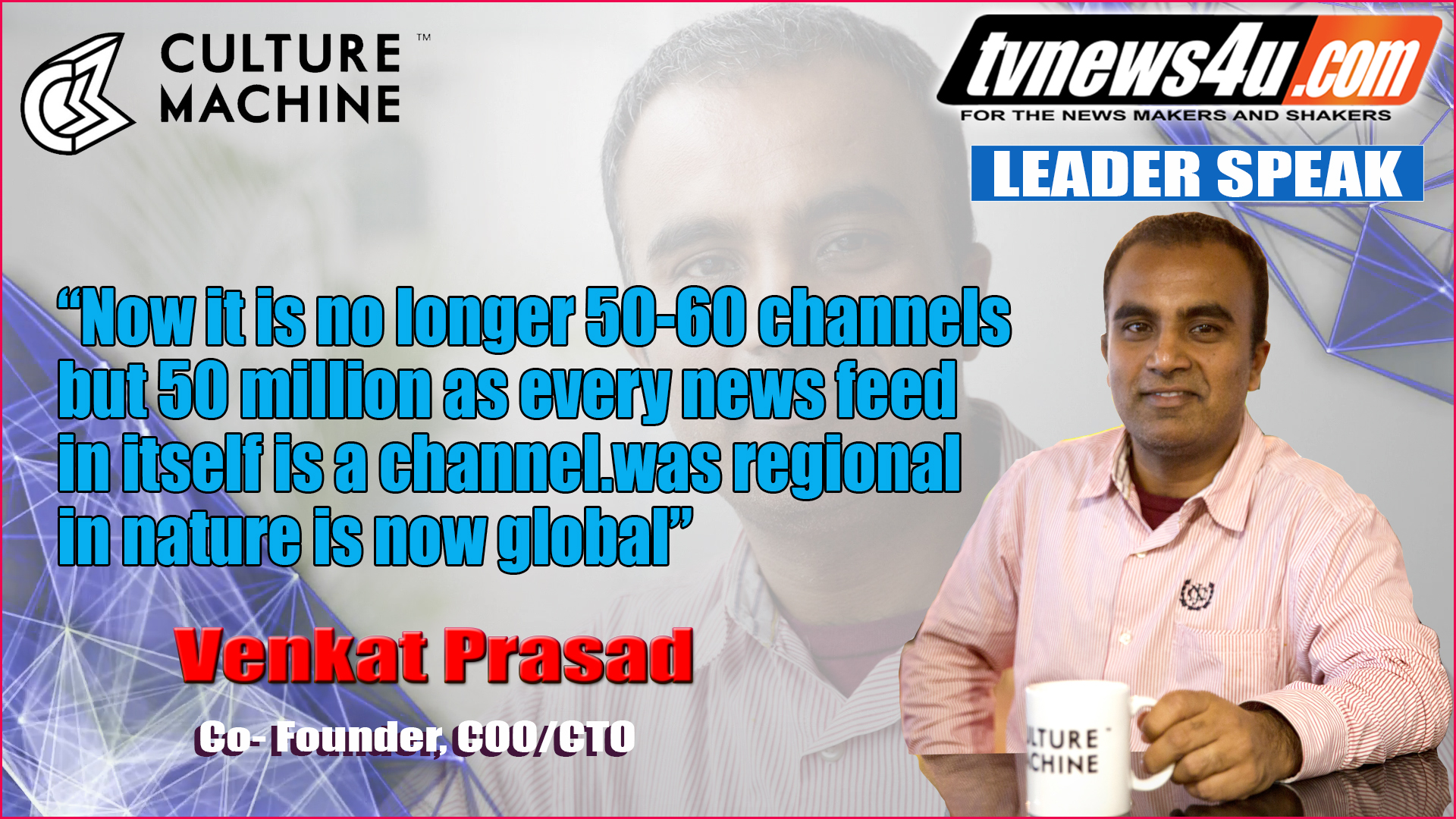
Three years ago we started ‘Put Chutney’- our digital media brand that caters to the Tamil speaking audience, there was nobody who was doing digital in Chennai, now there are various players catering to various audiences and communities as India is a much diversified market with multiple languages and dialects. Each region has its own way of telling a story, also what is relevant in Chennai may not be in Assam. This has opened many avenues to narrate a story and the challenge now is the distribution and creation of content.
Culture Machine now is trying to scale the content and distribute the content. Distribution is done by various other platforms and we are solely concentrating on creating content.
- How many Media Brands does Culture machine have?
Right now we have 10 Media Brands out of which 5 are flagship brands. Being Indian – caters to the North Indian audience. It goes through across platforms YouTube, FB, BeingIndian.com website
Put Chutney – catering to the Tamil audience. Put Chutney is also available across platforms
VIVA –Caters to the Telugu speaking audience
Awesome Sauce – Traditional Indian food married to modern tastes. Interestingly this was a FB brand which migrated to Culture Machine, also available on YouTube
Blush – caters to women
Culture Machine has the ability to build multiple Media brands which will satiate the taste of various micro communities and then be able to identify and create programming using our technology from the Intelligence machine and creation using our studio format.
Creating high ended content that is brand sponsored and our sales team which will then go and sell those properties.
We then look into creating content like Beauty Tutorials, What are the 5 things to do in summer or exotic Monsoon locations in MP which are endorsed by a brand, those kind of videos are created by another technology product called ‘Video Machine’. What would take an editor 2 days to deliver the Video Machine delivers in 5 minutes. You can choose a particular topic and say this is the kind of story I want to build. The machine delivers the content within 5 minutes which is then ready to be uploaded on the various Social Media platforms.
We have licences from platforms for footages including our own library. For e.g. – India being upgraded by Moody’s was breaking news this morning we put out a video on 5 facts to know on how the rating happened.
Another instance, for Mission Impossible we created a story line where the protagonist takes an OLA to reach a destination which essentially is a Product placement, which is the Bread and Butter of our business. Recently we also licenced it.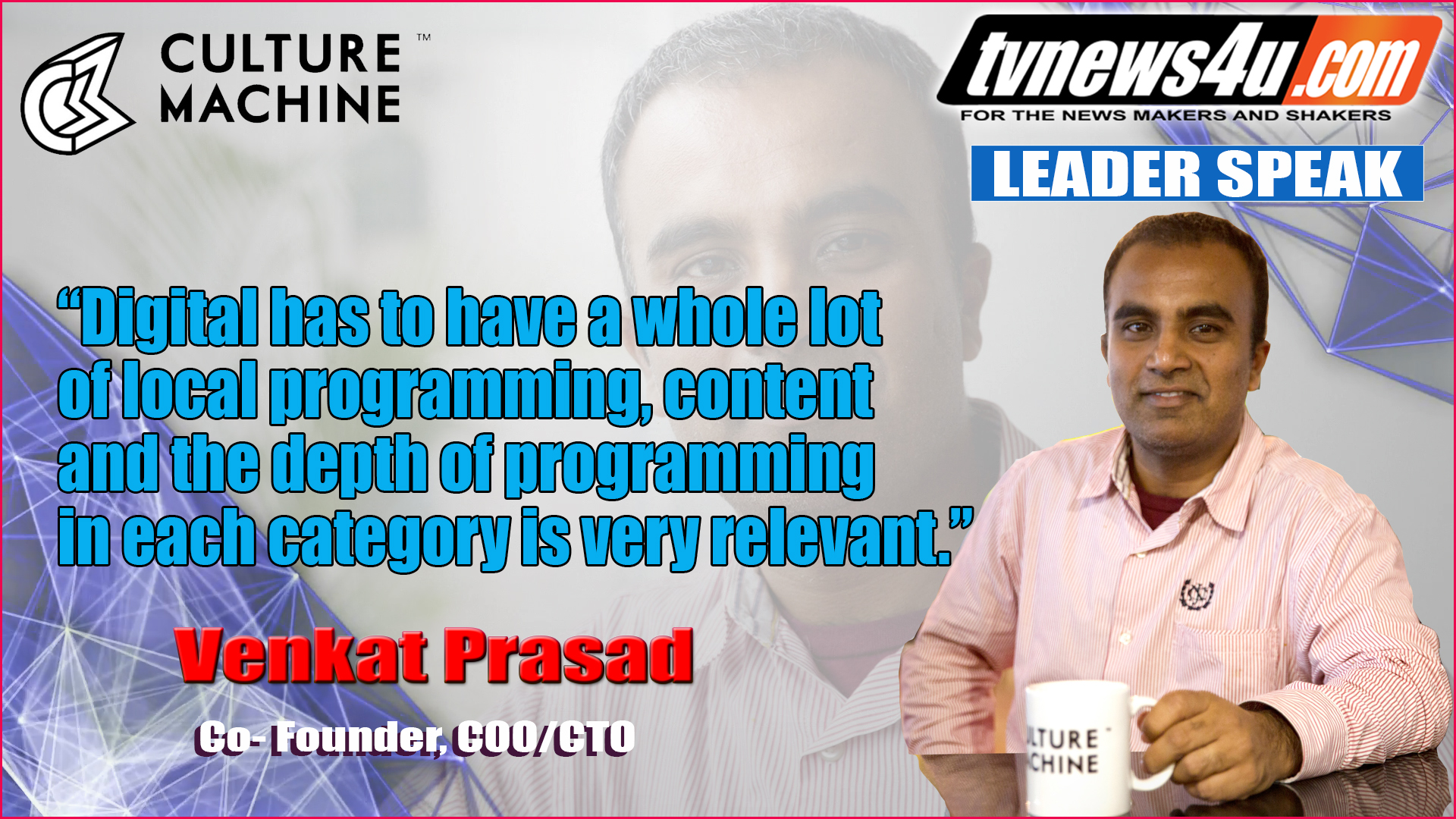
- Despite creating quality product, digital content creators have a problem in monetizing their content…..how does one overcome this and achieve a better value?
As a Media brand it’s easy to monetize but as an individual creator one needs to build an audience base to be able to monetize. Today creating content has become very easy and cheap. In the US such content creators make $ 1000-5000 per month, but the Indian market has just started to take baby steps.
The US Digital market is a 100 billion dollars and overall Advertising market is 300 billion, with TV being 80-90 billion, digital another 100 billion and the consumer’s dollars being spent flows into the Eco system. India the whole advertising spend is only 10 billion and 5 times the audience so monetization is a problem because there is no growth in the general economy and this will increase only when the consumer consumption increases.
5 years ago E Commerce was less than a billion dollar business, today it is a 20 billion dollar business but China has half a Trillion Dollar E Commerce business and US is a trillion Dollar business. In India the upside is with 3 times the population in another 20-30 yrs, India would be the largest E Commerce business in the world.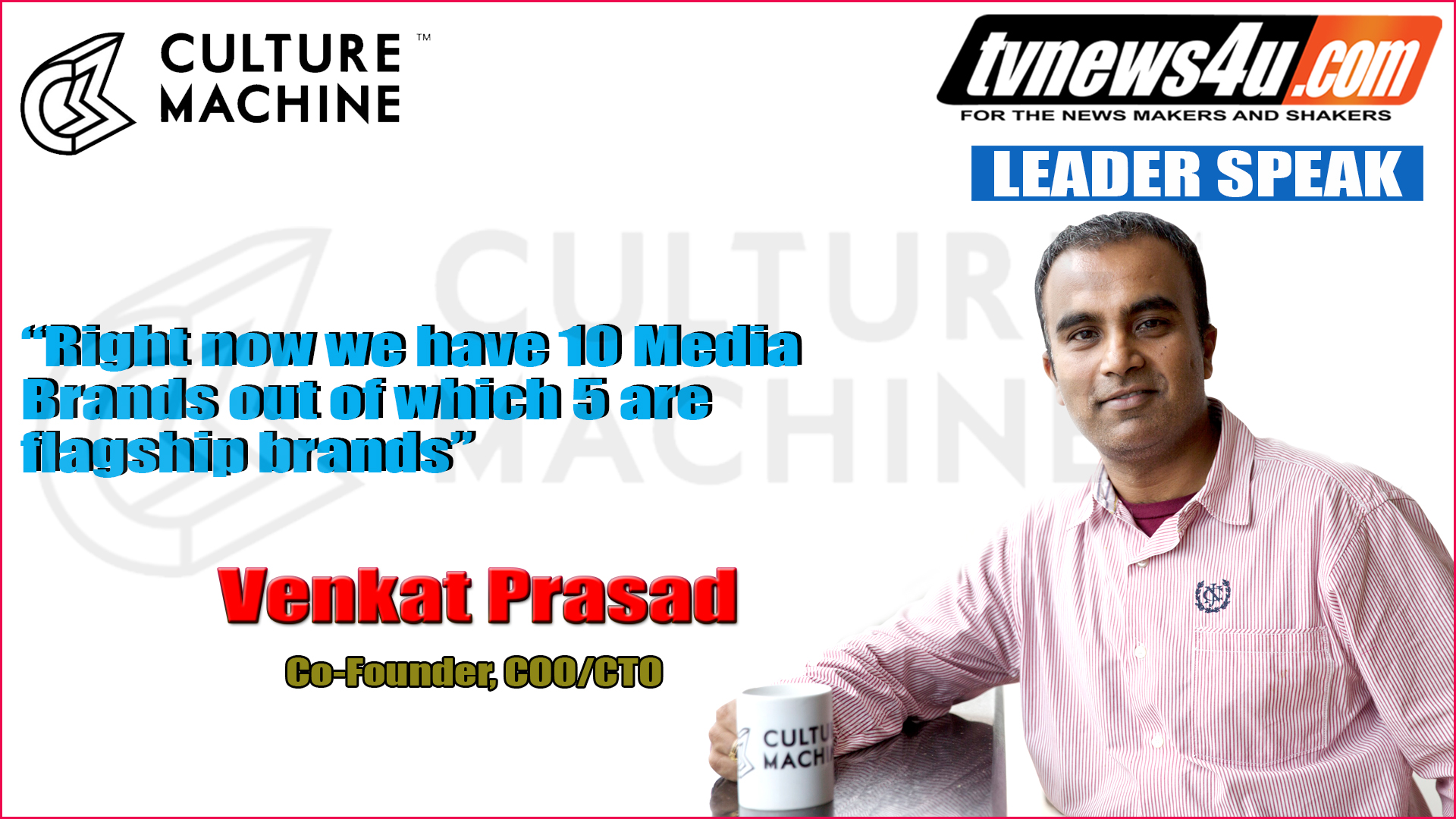
Coming to digitization, we could be in the life cycle of very early phase of adaption something which 10 years down the line or even earlier could be significantly large to help creators through Media Companies to thrive and become next gen Wipro and HCL of the world.
- With broadcasters spreading their tentacles in digital media with their own OTT platforma… can you grow bigger than these big Broadcast Networks?
There is enough space for everybody to grow in this medium. You have to go where the consumer is, historically the consumer earlier was into TV, but for the past 5 years there has been a massive shift to mobile and digital, there is no longer appointed viewing time particularly after JIO as data became cheaper. In the Western markets there are other gadgets and connectivity through broadband and Wi-Fi here in India it is via the phone and it is going to be the 1st and only major screen for many for a long time.
JIO has impacted in opening up the market but still the monetization will happen when more advertisers enter the market and that will happen with the growth of GDP and it will be a natural progression of GDP growth by which the Ad pie will expand. India has traditionally been a supply exchange and not a demand exchange market, there is always a demand for all things but the affordability, supply & distribution hasn’t been good.
Now for the past 10 years it’s been growing and in another 10 years digital consumption will overtake traditional television consumption.
- Still there is a paucity of advertising in the Digital platform, any reasons?
Mostly it’s a mass market outside of the major cities. In Major cities the affluent consumers are able to consume the content on mobile with Data connectivity. Beyond that you need a Smart phone, the network connectivity and the purchasing power to pay for the data. Now this phenomena is prevalent in smaller cities and towns and the advertisers are realising that it is more and more effective to look at Digital for their brands. For example –a jewellery brand instead of spending 50 lacs for 1 spot on TV can spend the same amount on 50 different stories for different audiences. And get 10 times more exposure than 1 spot on TV.
It is projected that the offline version i.e Print and TV spending is growing at 7-8 % per annum and Digital is growing at 30 – 35% year on year, because of the compounding growth it will overtake the TV spends in the next 5 yrs. Media Companies which were producing content for TV will now have to come to digital. At the end of the day, the consumer wins.
Our brand Put Chutney in Chennai is first with most topical news, like when Jayalalithaa passed away, we were the first and many TV networks took our footage.
In the video titled ‘Vijay or Joseph Vijay?’ on Put Chutney around the Mersal issue, we showed Meenakshi Hospital which was a brand endorsement and now we are also partnered up with Apollo Hospital.
But unlike TV here the brand is not exposed for longer time but for a few seconds. Also monetization on Digital is not calculated like how it is done for Television, but on a metrics of reach/share and the number of views.
- How many Videos do you create?
Video Machine can create 20-30 videos per day and an average of 100-120 videos a month. Making use of our studio facility, on an average we create about 8-12 videos a month.
We also create content for our brand clients.
- Do you think like TV Digital also needs to be measured?
Yes Digital needs a Third Party like BARC to measure reach. BARC now has partnered with Neilsen and Culture Machine has partnered with Neilsen for certain analytics and questions we have. The idea is we need a comman currency so that the buyers of advertising from Marketer’s will be able to reach out to publishers of this content which is what we do.
- Venkat the person other than being a technocrat and running technology heavy business?
Venkat currently lives in the San Francisco Bay Area and when not on his business trips globe- trotting, meeting clients and teams, he loves spending his free time reading books, watching movies, meditating, nature hikes, mentoring, workout training and Salsa dancing.
With an MBA from UCLA, Anderson Business School based out of Los-Angeles and an Engineering degree in computer science from top notch Indian University based out of Chennai, Venkat has all the necessary training, experience and connections to build a successful global enterprise.
His operating motto has always been to set high standards and challenging goals for himself and his team, to do the best to one’s ability, to do it right by the stakeholders and to contribute towards making the world a better place.

